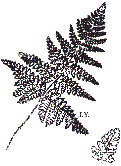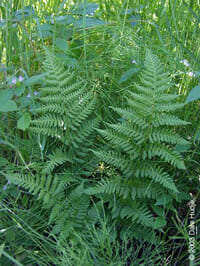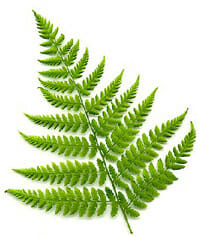Spiny Wood Fern – Dryopteridales Dryopteridaceae Dryopteris expansa
 |
 |
 |
Identification & Description:
Fronds clustered, erect and spreading to 3 feet tall. Rhizomes stout, ascending to erect, clothed with chaffy, brown scales. Frond stipes scaly at the base; blades broadly triangular to egg-shaped to broadly oblong, 3 times pinnate; leaflets 5-20 pairs, the lowest pair broadly triangular and asymmetrical; ultimate segments toothed; the 2 basal ones much larger than the others and spur-like. Sori are rounded, partially covered by the rounded indusium.
Physical Characteristics
Fern is hardy to zone 3. The seeds ripen from July to September. We rate it 1 out of 5 for usefulness.
The plant prefers light (sandy), medium (loamy) and heavy (clay) soils. The plant prefers acid and neutral soils. It can grow in full shade (deep woodland) or semi-shade (light woodland). It requires moist soil.
Edible Uses
Leaves; Root.
Root – raw or cooked. Baked and then peeled before being eaten. The raw root is rather bitter but they develop a sweet taste when cooked and are said by some people to develop a flavour rather like sweet potatoes. The root is best harvested in early autumn. At this time the rhizomes are surrounded by scaly, finger-like projections – if the projections are flat and dark inside then the rhizomes are not good to eat but if they are round, fleshy and light-coloured then they can be eaten.
The young shoots, harvested in spring before they have fully unfurled, can be cooked and eaten. They can be added to soups.
Other Uses
Hair.
An infusion of the leaves has been used as a hair wash.
Cultivation details
An easily grown plant, it prefers an acid to neutral soil, succeeding in ordinary fertile soil in a shady position. Prefers a moist soil.
Members of this genus are rarely if ever troubled by browsing deer.